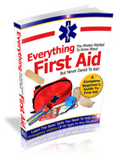Welcome to lacerations Guide
Definition Of Dermal Lacerations Article
 To bookmark this article for further reading, click here.
To bookmark this article for further reading, click here.
Tips To Prevent Infected Lip Lacerations
The winter months play havoc on the skin. The hands get dry and cracked, but even worse than the hands are the lips.
As we crank up the heat in our homes to stay warm, the dry air pulls out the moisture in our lips; cracked dry infected lip lacerations are often the result. To prevent the pain and discomfort of infected lip lacerations, drink plenty of water; staying well hydrated during the cold winter months is as important as in the hot summer months.
Hydration begins on the inside and works its way outward to the outer cells of your skin and lips.
Most everyone experiences dry lips at one time or another, but they don’t have to suffer with infected lip lacerations. Drinking 8 glasses of water a day is truly the way to go to stay hydrated.
Downing 8 cups of coffee or soft drink is not the same thing as drinking water. Some doctors advise coffee drinkers to drink a glass of extra water for every cup of coffee they drink to help flush out the caffeine.
Dehydration is the main culprit causing infected lip lacerations.
To prevent infected lip lacerations use a good lip balm regularly every day. Keep one around the house and one in your pocket, and some folks even keep one in their cars.
It is vitally important to keep your lips soft and pliable; without proper moisture your lips may become hard and cracked. Lip balm can be purchased at any convenience store, grocery store, or pharmacy.
Many people dispense with the lip balm and use plain petroleum jelly, such as Vaseline. You may have items at home that will work just as well to protect your lips, without having to go out and buy a lip balm right away. Mineral oil and olive oil works wonderfully to condition the lips.
If you notice your lips getting dry use what you have around the house until you can get to the store to buy something. Open cracks are avenues for germs to enter and cause lips to become infected.
Staying hydrated is key to preventing infected lip lacerations. Avoid coffee and other drinks that contain caffeine, because caffeine dehydrates, rather than hydrates. You may be drinking copious amounts of coffee, but the caffeine acts as a diuretic to pull fluids from the body.
People that have certain diseases, such as Scleroderma have to take special care of their lips to prevent infected lip lacerations. Their skin becomes hard and stiff, their lips crack and bleed.
People with Scleroderma often report having used a lip balm that contains bee’s wax works best to help condition the lips to prevent the cracks that sets them up for infected lip lacerations. Often folks remember to use a good cream or lotion on their skin, but they forget or don’t think about conditioning their lips.
Drinking plenty of water and placing a moisturizing barrier on the lips will help to prevent infected lip lacerations.


